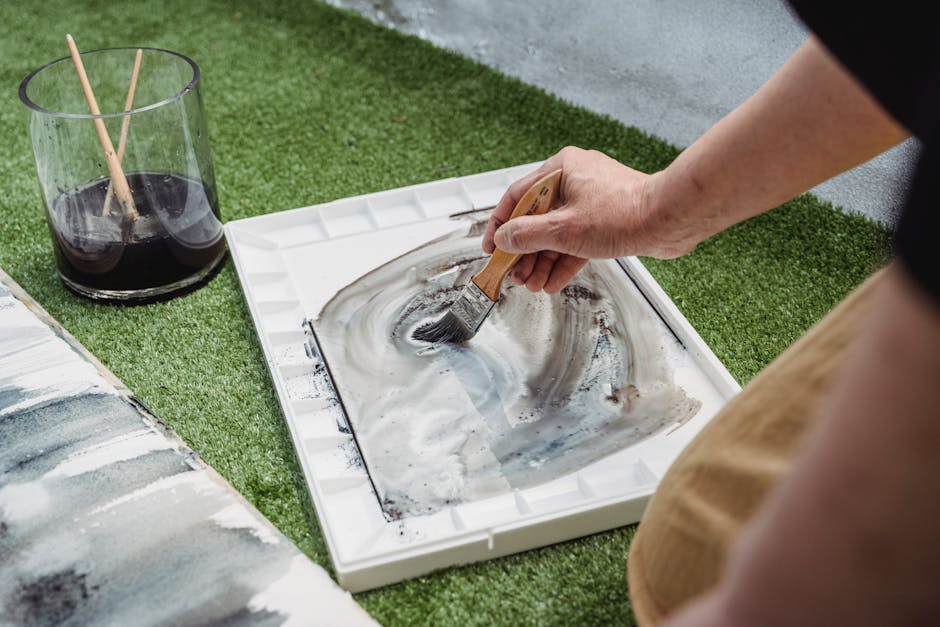Are you ready to transform your living spaces into vibrant works of art? Choosing the right colors for your home surface painting project can be a daunting task, but fear not – we’ve got you covered with these essential tips to help you bring a burst of life into your home.
1. Understanding Color Theory in Surface Painting
Color theory is the backbone of any successful painting project. Knowing how colors interact and influence each other can help you create the mood and ambiance you desire in your home. Understanding concepts such as complementary colors, analogous colors, and color temperature will guide you in selecting the perfect palette for each room.
For instance, warm colors like reds, yellows, and oranges can make a room feel cozy and inviting, while cool colors such as blues and greens promote a sense of calm and tranquility. Experiment with different color combinations to see how they impact the overall feel of your space.
Don’t forget about the psychological effects of colors too. Blue can promote productivity in workspaces, while yellow is associated with happiness and creativity. By understanding these nuances, you can tailor your color choices to suit the function of each room in your home.
2. Exploring the Psychology of Colors for Your Painting Project
Colors have a profound impact on our emotions and behaviors. Red, for example, is known to stimulate energy and appetite, making it an excellent choice for dining areas. On the other hand, green is often associated with nature and balance, making it ideal for creating a peaceful oasis in your bedroom.
Consider the feelings you want to evoke in each room before selecting your colors. Soft pastels can create a serene atmosphere, while bold and vibrant hues add drama and personality. Take into account the natural light in each space, as it can affect how colors appear throughout the day.
3. Choosing the Right Paint Finish for Different Surfaces
Selecting the right paint finish is as crucial as choosing the perfect color. Matte finishes are great for hiding surface imperfections and creating a sophisticated look, but they may not be as durable in high-traffic areas.
Satin finishes offer a subtle sheen that is easy to clean, making them an excellent choice for kitchens and bathrooms. Gloss finishes, with their reflective properties, are perfect for trim work and accents, adding a touch of elegance to your space.
4. Tips for Harmonizing Colors in Home Surface Painting
Creating a cohesive color scheme throughout your home can tie the various spaces together and give a sense of continuity. One tip is to use a color wheel to guide your choices, ensuring that your chosen colors complement each other harmoniously.
Another technique is to choose a dominant color for the main areas of your home and then use varying shades and tones of that color in different rooms. This approach creates a unified look while allowing for subtle variations that add interest and depth.
5. Accent Colors: Adding a Pop to Your Surface Painting
Incorporating accent colors is a fantastic way to inject personality and visual interest into your home. Whether through bold statement walls, colorful furniture pieces, or vibrant accessories, accent colors can liven up a space and highlight its unique features.
Experiment with unexpected color choices to create focal points and add a touch of whimsy to your interiors. Remember, accent colors should complement your main color palette while bringing a playful element to the overall design.
6. Popular Color Trends for Home Surface Painting
Staying up to date with the latest color trends can inspire fresh ideas for your home painting project. Whether it’s the timeless elegance of neutral tones, the boldness of jewel tones, or the soothing nature of earthy hues, there’s a trend to suit every style and preference.
Consider incorporating trendy colors through accessories and décor items if you’re hesitant to commit to a full wall color. This allows you to experiment with different palettes without overwhelming your space with a bold color choice.
7. Mastering Color Combinations in Your Painting Projects
Achieving the perfect color combinations requires a balance of hues, tones, and shades. You can opt for monochromatic schemes using varying intensities of a single color for a sophisticated look, or go for complementary colors that create visual interest and contrast.
Analogous color schemes, where colors sit adjacent to each other on the color wheel, offer a harmonious and cohesive feel. Experiment with different combinations to find what resonates with you and enhances the aesthetic appeal of your home.



